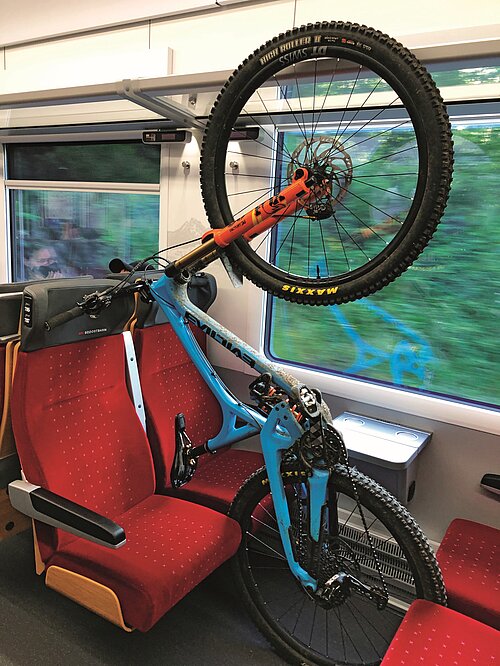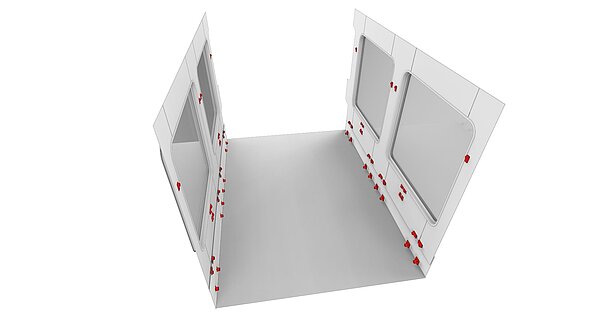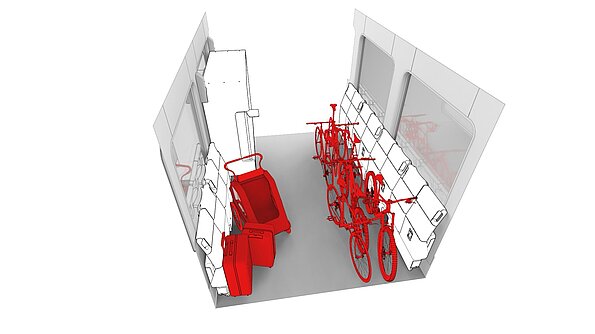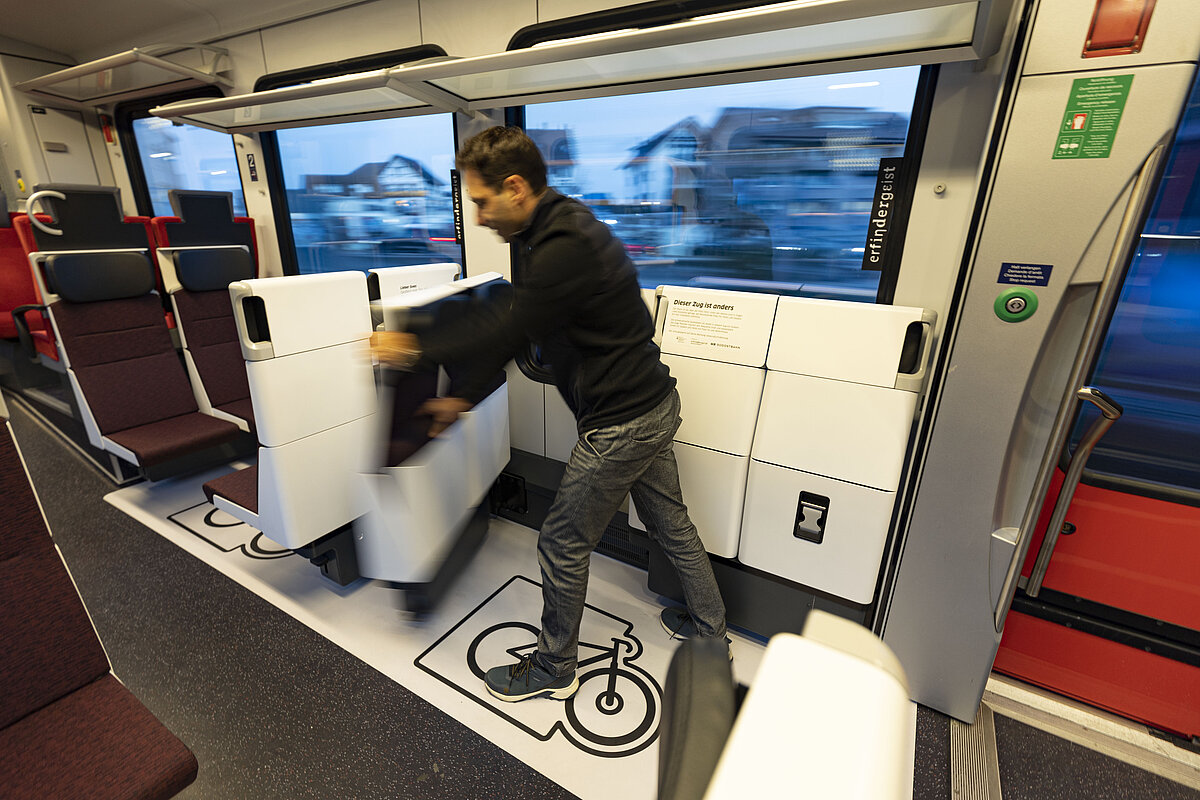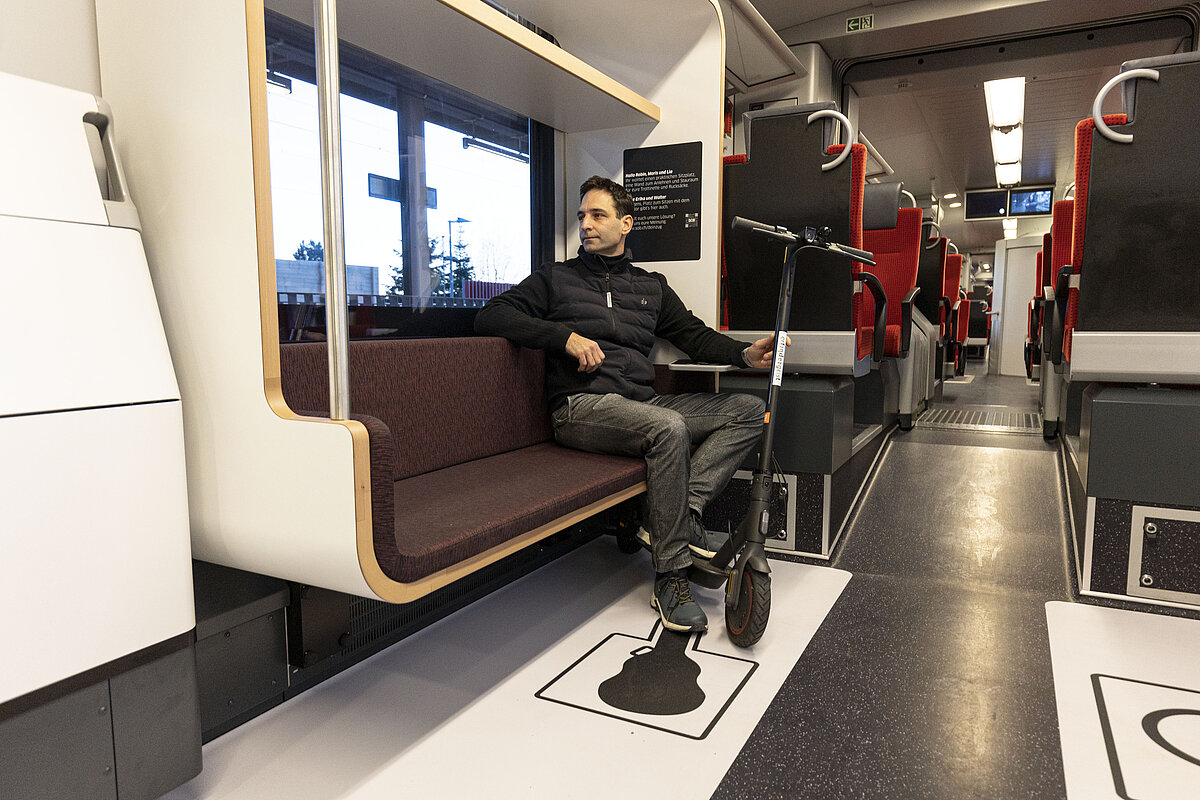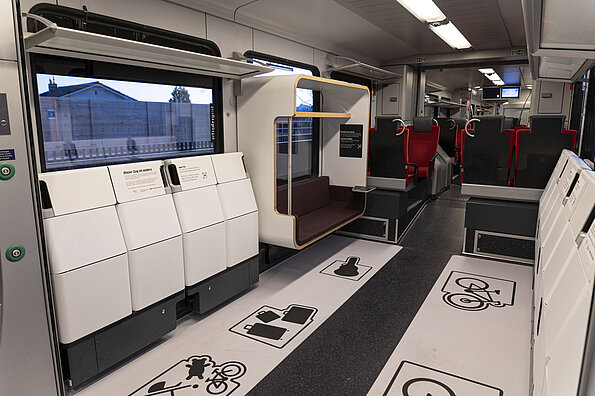More and more bicycles and items of luggage are being transported on trains. This is posing challenges for rail companies throughout Europe: they want to provide customers with sufficient space for their bicycles and luggage, but space requirements change depending on the time of day, the day of the week or the season. ’However, the interior design of our trains does not change. The trains always offer the same number of seats and storage spaces at any time of day or night, whatever the weather’, says Urs Brütsch, Head of Mobility at Südostbahn. The problem is that bicycles or luggage are often placed in haphazard locations on the train, obstructing escape routes.
Innovation
Space for commuter and leisure travel: Schweizerische Südostbahn AG wants to make train interiors more flexible
This is where the SOB pilot project comes in. Using the available space, Christian Keller, an engineer and industrial designer at Erfindergeist from Rorschacherberg (CH), is advising Südostbahn on the project and has developed a new flexible compartment for the passenger area. The key aspect is that the prototype, which has now been installed in an SOB-Stadler FLIRT vehicle, can be fitted to existing connection points in trains - such as those on the seats.
The reuse of existing connection points enables quick and easy installation without having to make any adjustments to the vehicle's structure. Customer requirements can thus be mapped quickly and cost-effectively. The usability of existing vehicles can be increased and the efficiency of the trains improved. It adds value for users, transport companies and the environment. Christian Keller had the traditional Swiss army knife in mind: ’They make optimum use of the “space” and offer a variety of functions that can be folded out exactly when you need them.’ The current situation on trains is different, and the functions cannot be adapted: ’The space is there, but there is no room.’
The newly developed seating solution can be adapted flexibly. A classic four-person compartment can be converted by train staff into storage space for bicycles and luggage in a few simple steps. Unlike with folding seats, there is no conflict of use among passengers, because the seats can no longer be used by passengers as seats when in the luggage storage position. In the pilot project, a key is also required to change the configuration of the seats. If the zone is used for seating, passengers will have a fully-fledged seat with a head cushion, ample shoulder room and a contoured backrest. This offers an increased level of comfort compared to folding seats.
In the solution’s configuration as a luggage area, straps are also used to secure bicycles for transportation. In the pilot project, the newly developed "space-saving seat" contains a lot of mechanics. Its design is based on an innovative type of folding and sliding system. The seat surface must be foldable and remain as space-saving as possible. This is because the seats slide together when they are folded. Only in this way can both functions of the seats be fulfilled. For seated passengers, the usual comfort and free space - especially in the shoulder area - should be available and, at the same time, the view out of the window should be maintained across the entire width. When folded down in front of the window, however, the seats must be narrower, otherwise the seat sections would wedge together when they are pushed shut.
In addition to the zones for luggage and bicycles, Südostbahn is also testing a compartment with a bench seat that offers space for e-scooters and a small table for smartphones and tablets. This seating module was developed with the help of young people, who were invited to participate in the project. Thanks to their contributions, additional storage space for small items such as school bags was also allowed for. The compartment can also be used by people of any age with walking frames, since the handrails incorporated into the module allow them to stand up easily.
The results of the trial run until the end of 2024 will also be made available to other Swiss companies in the public transport sector. At the same time, SOB is working with partners on potential implementation scenarios for train fleets. Südostbahn is also interested in cooperating and exchanging ideas with other service providers, such as foreign railway companies, seat manufacturers and other industry partners, in order to develop and implement the solution for large parts of the rail industry.
The ’Innovative space management on trains’ pilot project is financed by Südostbahn and Erfindergeist, and receives additional financial support from the Swiss Federal Office of Transport as part of its subsidisation of regional passenger transport.
If you have further questions, please contact us by e-mail at einsteigen@sob.ch.
Text: Schweizerische Südostbahn AG/Conradin Knabenhans
Photos: SOB/erfindergeist
Visit and demonstration of the pilot vehicle of Schweizerische Südostbahn AG
At the national CYCLE WEEK from May 23 to 26, 2024, cycling fans and professionals, the industry and tourism will come together in Zurich for the country's biggest cycling festival. During the guided tour on Saturday, May 25 or Sunday, May 26 you will visit the pilot compartment together and can test the functions. Actively contribute your experiences and ideas to shape the future of bike transportation on trains. Book your ticket here.
If you have further questions, please contact us by e-mail at einsteigen@sob.ch.
